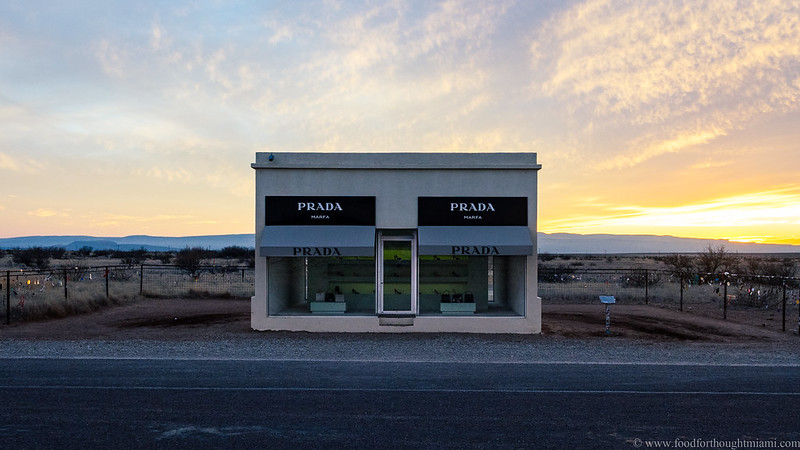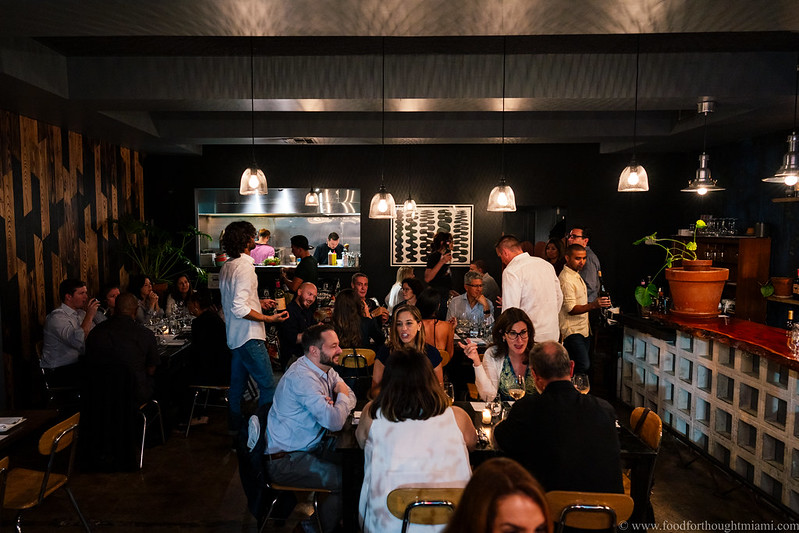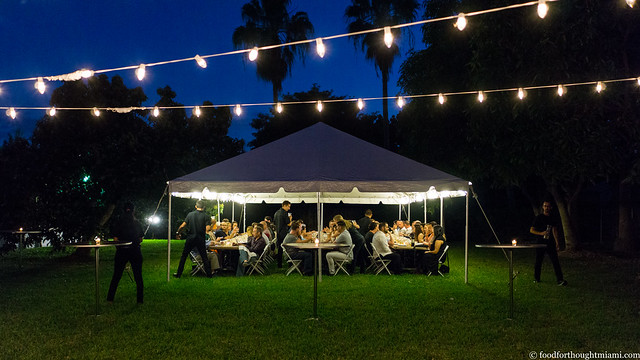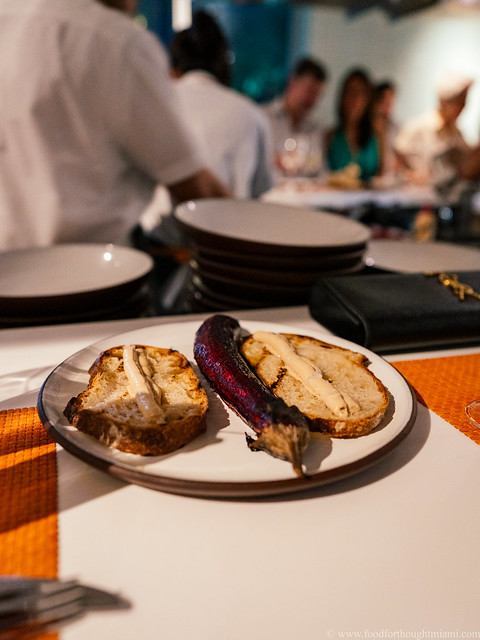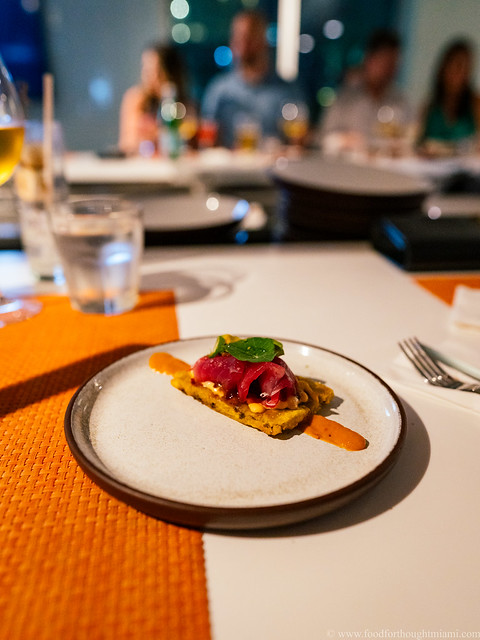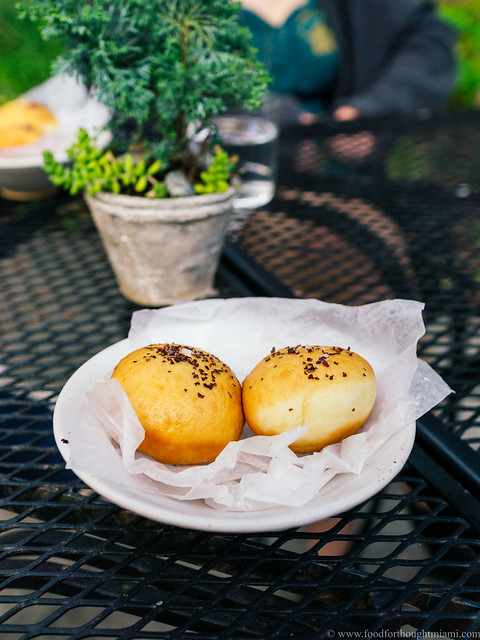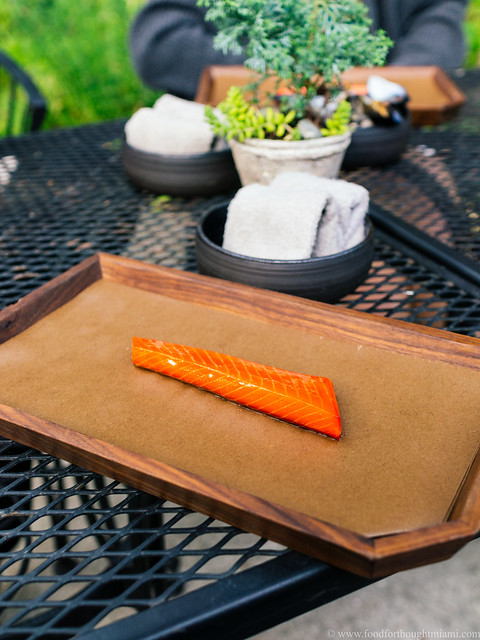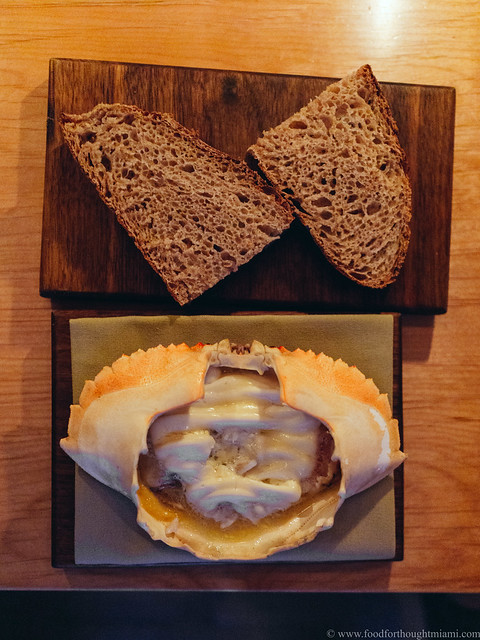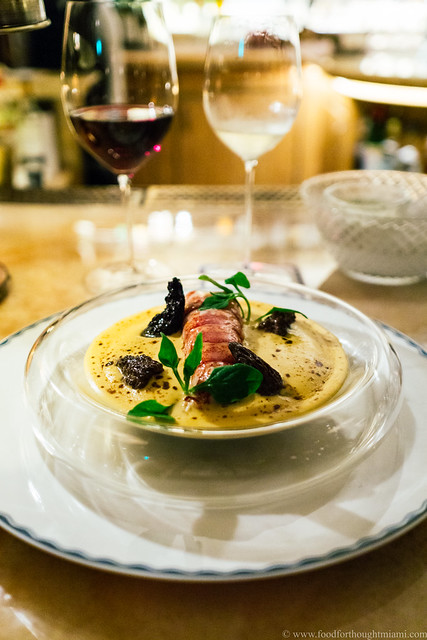It was exactly ten years ago to the day that Steven (a/k/a Chowfather), Steve (a/k/a Blind
Mind) and I hosted our first
Cobaya "underground" dinner. Those were interesting times. Following the financial crisis of 2007-08, the food world seemed to be at something of an inflection point. Chefs like David Chang were pulling the chair out from the pretensions of fine dining and replacing it with a hard, backless stool in front of the kitchen counter at
Momofuku Ko. Food trucks were a big thing, where aspiring restaurateurs could pursue their dreams without the big capital outlay required for a brick-and-mortar build-out. The hegemony that newspapers exercised over public discourse on restaurants was being undermined from one side by Yelp, and from the other by these things called "blogs" where anyone with some rudimentary knowledge of how to operate a computer could publish their thoughts to the internet. Many would do so with actual thoughtfulness and insight, and often with a side of snark.
[1] Instagram didn't even exist yet.
Locally, Michelle Bernstein and Michael Schwartz were the queen and king, respectively, of Miami dining, with bookend
Beard Awards to prove it (Michelle won Best Chef: South in 2008, Michael won the same award in 2010).
[2] Since then, Michael's opened more restaurants than I can count,
[3] while Michelle took a different direction; she recently opened
Cafe La Trova on Calle Ocho with cantinero and longtime compadre Julio Cabrera (recently named
Tales of the Cocktail's Bartender of the Year), and continues to run a
high-end catering operation, but these days you're equally likely to see her on T.V., hosting "
Check, Please!" or "
SoFlo Taste," as in a restaurant kitchen. Good for her; it's a crazy life. Meanwhile, back in 2009, many of those who are now among Miami dining's most prominent names were still sharpening their knives: to name just a few, Brad Kilgore was working his way through some of Chicago's top kitchens, Zak Stern (a/k/a
Zak the Baker) was traipsing around Europe, making cheese, herding goats, and occasionally baking bread at my kids' summer camp, Jose Mendin was still a year away from opening the original
PubBelly.
It was a long time ago – longer than the lifespan of most restaurants.
I've told the Cobaya origin story many times when folks ask, "How did you start doing this?", but never written it down. Many of you have probably heard it before. The whole thing started in the valet circle of a Sunny Isles hotel. A couple chefs, Kurtis Jantz and Chad Galiano, had cobbled together a group of "
food-focused locals" to be their focus group for a new restaurant concept. They'd found most of us online, probably primarily via
Chowhound, which back in the day actually hosted a somewhat lively food discussion on its boards. That was how most of us knew each other as well, though a few of us had met in person. As the Steves and I were waiting for our cars at the end of the evening, we started talking about the then-current trend of "underground dining" groups.
Two questions triggered it: "Why not here?" And then: "Why not us?" And just like that, we decided to do it ourselves. We posted something on a
Google message board that I'd used to organize a few other get-togethers,
[4] started a
website, and posted a
mission statement:
The goal here is a very simple one - to get talented chefs to cook great, interesting, creative meals for an audience of adventurous, open-minded diners. That may happen inside a restaurant, it may happen outside of one. It may be a multi-course tasting menu, it may be a family-style whole hog dinner (here's hoping). For those who question the "underground" street cred of this mission, those questions are perfectly legitimate. My answer is, "I don't care." We're not limiting ourselves to meals cooked in abandoned warehouses in secret locations disclosed the day before the dinner; we're also not limiting ourselves to white tablecloths and silverware changed between every course. We're very open-minded that way: all that matters is if the food is good, and we think there's enough similar-minded folks to make that game plan sustainable.
Every invitation comes with a disclaimer: there is no "menu". There are no choices. You'll be eating what the chef chooses to make for the night. If you have food related allergies, strict dietary requirements, religious restrictions; are salt sensitive, vegetarian, pescatarian, or vegan; don't like your meat cooked medium rare, or are pregnant: this meal is probably not for you. Do not expect white-glove service. Don't ask for your sauce on the side. Just come and enjoy.[5]
Truth is, we hadn't quite honed our modus operandi yet – we let everyone know the restaurant that it was going to be at, and a preview menu got posted a couple days in advance – but the basic idea was that the chefs were going to get to cook whatever they wanted and the folks who showed up would get to eat it. We had no idea what kind of reaction it would get, but we wound up with a group of sixteen who wanted in.
On August 4, 2009, we hosted our
first "Cobaya" dinner at Talula. Andrea Curto-Randazzo was the chef, along with her then sous chef, Kyle Foster.
[6] It is still one of my favorite Cobaya meals, and I still pine for that tripe risotto.
What we found out is that there was actually tremendous demand in Miami for this kind of thing. We announced
our next event a couple months later, and got so many responses that we added a
second seating for the following night. Chef Jeremiah Bullfrog wound up doing two rounds of seven courses for 36 diners in a penthouse suite in Midtown Miami. I brought Frod Jr., who was 12 years old at the time, along to one of those, and he still remembers Jeremiah offering him a cigar and a beer as we hung out on the balcony post-service.
[7]
Since then, we've put on a total of 77 of these "experiments." We've worked with some of Miami's most highly regarded chefs,
[8] an even greater number of skilled and creative but less-celebrated talents, and the occasional visitor from places further afield.
[9] We've had Andrew Zimmern join us for a dinner, which wound up being featured on his show "
Bizarre Foods America,"
[10] and then later cook for us at a couple events we co-hosted with the
South Beach Wine and Food Festival. We've eaten with our hands at "kamayan" Filipino feasts in fancy South Beach restaurants, and we've eaten at a backyard farm in Homestead.
We've been served
pig's heads,
lamb's heads,
goat's heads,
pig's brains,
veal brains,
pig skin noodles,
lamb's livers,
rabbit's livers,
beef tendon chicharrones,
sweetbreads,
duck testicles,
mushroom dinuguan,
morcilla toast,
beef heart tartare,
grasshoppers,
silkworms,
waterbugs,
ant eggs,
abalone,
geoduck,
turtle,
blowfish,
suckling pigs and
smoking cows and
kangaroo and
rabbit and
venison and
goat, not nearly enough
tripe, and enough foie gras to stuff a flock of geese. We haven't actually had guinea pig yet, unless you want to count a
guinea hen stuffed with pig (a noble effort). We've had a dinner with
truffles for every course, and another where we
drank liquors from the 1950's-1970's with every course, and another –
Cobayapalooza! – with seven different chefs for each course.
We've had roughly a thousand different people attend our experiments, and now routinely have to deal with the fortunate but nonetheless demanding challenge of receiving 250-350 requests for the 25-35 spots we typically have available for each of these events. We've spent a lot of time and effort trying to find ways to handle those requests fairly and in a way that maximizes the most people's opportunity to join us, while also making sure we can timely fill the spots that we have.
[11]
Through it all, we've remained faithful to that mission statement, encapsulated in that first sentence: "
The goal here is a very simple one - to get talented chefs to cook great, interesting, creative meals for an audience of adventurous, open-minded diners." I feel very fortunate to have been able to do exactly that for the past ten years, and to meet and eat with so many wonderful people along the way. Thanks for your support.


